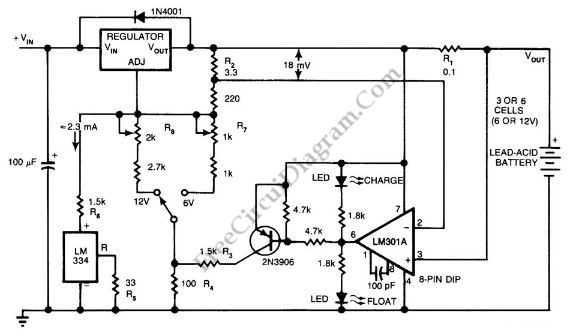Fast Charger for Better Lead-Acid Battery Life


Compromising between the speed while maintaining safe operation for battery charging is an interesting challenge. This circuit can be used to charge a battery , and it’s safe and rapid. To get quickly charged, this circuit charge with initial charging voltage of 2.5V per cell. To keep it safe, this circuit prevent the battery from overcharging by lowering the voltage to 2.35V when detect a current drops below 180mA. This current drop is a sign that the battery is almost fully charged. The R2 resistor is used to provide 18-mV voltage reference, and it will be compared with the voltage drop across R1 resistor by LM301A operational amplifier. The LED provides an indicator of the circuit state. The voltage regulator is controlled by the signal from comparator’s output. If the “almost full” condition is detected, i.e. when the current passing trough R1 drops below 180mA, the voltage regulator will be switched to produce the lower floating voltage. The 150-mV difference between the charge and the proportion of R3 to R4 determine floating voltages (the voltage when the charged battery is detached) .